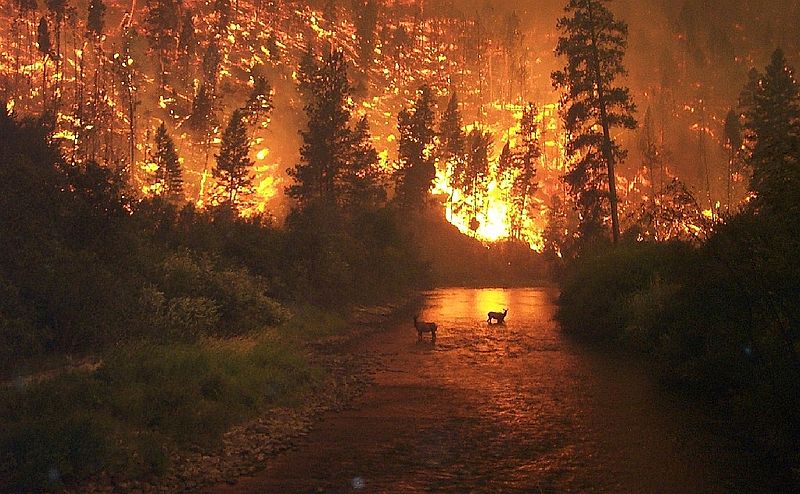(Part I of a short series)

In areas affected by seasonal wildfires Covid-19 may cause even greater problems this year. In some regions Covid-19 has meant reduction or cessation of controlled burns to help mitigate fires1. Many rehabilitators are functioning with less volunteers, interns, and paid staff. This makes the need for personal preparation even more important. Use the following tips to help get yourself and/or your center ready for fire season.
Make or Review your Plan
- Think through the steps to safely evacuate yourself, other people, and the wildlife in your care. If you are a home rehabber, don’t forget to include your pets/livestock.
- Prioritize! Who/what needs to be evacuated first? What can you afford to leave behind?
- Print out emergency protocols and review them with anyone that will be helping you in an emergency (partner, volunteers, etc.). Keep them in a binder or folder that is easily accessible.
- Have emergency supplies in labeled containers that can easily be grabbed as you evacuate.This includes rehab supplies and supplies you and your family will need to survive.
Organize Emergency Information
- Arrange to get emergency fire/weather alerts via phone or email.
- If you use a phone tree or phone alert system for employees or volunteers make sure all numbers are up to date and people are willing/able to assist in an emergency.
- Have multiple copies of licenses and permits in a fire safe, your evacuation kit, and stored digitally in the cloud.
- If you lose your home or facility have a plan to transfer your patients to others.
- Prepare press releases for local media to redirect rescuers to operational facilities.
Do a Facility Check
- Clear brush and debris from around your facility, cut branches or limbs that overhang the roof or outdoor enclosures, ensure fire lines are clear.
- Check smoke alarms and fire extinguishers.
- Members can watch a webinar on fire extinguishers on the IWRC website.
- Make a list of materials or equipment (i.e O2 tanks) that could be hazardous in a fire. Mark these devices on posted fire escape maps.
- Ensure all equipment needed for evacuation (i.e. radios, animal carriers) is in working order.
- Be prepared to shelter in place if evacuation is not required.
Know the Terrain
- Know where fires are likely to come from.
- Plan multiple evacuation routes.
- Maintain up to date downloaded or paper maps; don’t rely on GPS/phones in an emergency.
Have a drill
- Go through the motions of evacuation, simply walking through your plan will help.
- Use every day experiences to prepare- know how long it takes to hook up a trailer, put together animal carriers, or catch up animals.
- Adapt and improve your plan as you go (i.e. it takes too long to put carriers together? Use pillow cases instead!).
Works Cited
- Phillips C. Covid-19 collision with 2020 fire season will ignite multiple threats. Union of Concerned Scientists, May 11, 2020, [accessed July 6, 2020] https://blog.ucsusa.org/carly-phillips/covid-19-collision-with-2020-fire-season-will-ignite-multiple-threats

Leave a Reply
You must be logged in to post a comment.